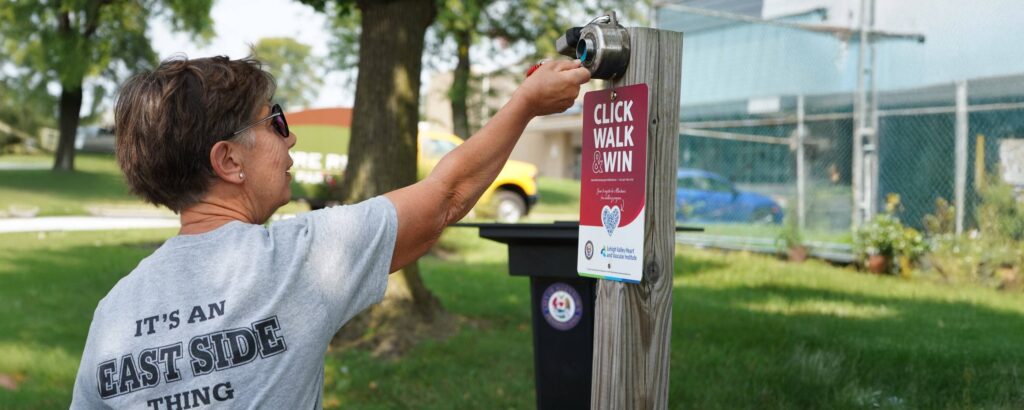While safety hazards in construction can grab headlines, overall worker health is also a concern. Since February is Heart Health Month, it’s important to note that according to the American Heart Association, 1 in 25 construction workers have been diagnosed with cardiovascular disease. This is attributed to long hours, high stress, poor nutrition, high tobacco use and the lack of heart-strengthening exercise.
When your workers are sick, productivity drops, affecting timelines, safety and ultimately profits. Contractors need to bring awareness to the importance of heart health, and its risk factors, and now is the perfect time to do that.
Understanding the Risk Factors for Cardiovascular Disease in Construction
The risks for cardiovascular disease include stress, diet, tobacco use and lack of healthy physical activity, all of which are prevalent among construction workers.
Long Hours and Stress. Construction is a demanding job. Many jobs take place in less than ideal conditions, including extreme temperatures, with physical demands and potential safety hazards. Couple those conditions with demanding schedules and job pressure and the risk of cardiovascular disease increases.
Less-than-Optimal Nutrition. Beyond the emotional and physical stress of working in construction is the limited access to healthy meals on the job site which often leads to a reliance on fast food or vending machines. Ultra-processed foods like processed meats, sugar-sweetened drinks and refined grain products have been linked to an increase in heart disease and even death, according to the American College of Cardiology.
Tobacco Use. While cigarette smoking has decreased in the US by 22% since 2004, it’s still prevalent in construction. The National Institute of Health reports that more than 25% of construction workers continue to smoke cigarettes and construction workers have almost twice the odds of using any type of tobacco compared to other workers.
Lack of Healthy Physical Activity. Even though construction is physically demanding, it doesn’t necessarily equate to heart-strengthening exercise. A healthy cardiovascular system requires brisk walking, jogging, swimming or cycling for at least 30 minutes five times a week.
These high-risk factors increase the likelihood one or more of your workers are currently suffering from cardiovascular disease and that’s not only bad for their health but for business.
Workers who must take multiple sick days and medical leave can negatively impact productivity, as well as increase healthcare costs for both the company and the employees. And safety risks increase when workers are feeling unwell or fatigued.
Strategies to Promote Heart Health
Promoting heart health in the construction industry doesn’t require a complete overhaul of your operations, it’s about integrating small, meaningful changes that support workers’ well-being. Here are actionable strategies to help your team reduce cardiovascular risks.
Provide Heart-Healthy Meal Options
Construction workers often rely on convenience foods that are high in salt, sugar and unhealthy fats, which can increase the risk of heart disease. Here’s how you can make healthy eating easier:
- Healthier Snack Choices: Stock break areas with nutritious snacks such as fresh fruit, nuts, granola bars or yogurt instead of chips and candy.
- Partner with Food Vendors: Collaborate with local food trucks or caterers to offer balanced meal options like salads, wraps or grilled proteins. Provide discounts or incentives to encourage workers to choose these healthier alternatives.
- Educational Materials: Post tips on heart-healthy eating in common areas and share simple recipes workers can prepare at home.
Incorporate Wellness Programs
Encouraging workers to prioritize their health starts with making it accessible. Implement wellness initiatives that target heart health directly:
- On-Site Health Screenings: Organize periodic checks for blood pressure, cholesterol and blood sugar levels. Early detection of issues can help prevent more serious problems.
- Stress Management Programs: Offer resources such as meditation apps, relaxation techniques or short mindfulness workshops to help workers manage stress.
- Health Challenges: Run friendly competitions, such as step challenges or hydration contests, to encourage team participation in healthy habits.
Encourage Tobacco Cessation
Smoking is a significant risk factor for heart disease, and construction workers tend to have higher smoking rates than the general population. Employers can take steps to help workers quit:
- Provide Resources: Offer access to tobacco cessation programs, hotlines or apps that support quitting.
- Incentives for Quitting: Create rewards programs to motivate workers to stay tobacco-free, such as small bonuses or gift cards.
- Promote Smoke-Free Zones: Designate job sites as smoke-free or offer designated smoking areas away from main workspaces to reduce exposure for non-smokers.
Promote Regular Exercise
While construction work is physically demanding, it doesn’t always provide the consistent cardiovascular activity needed to strengthen the heart. Employers can encourage workers to include heart-healthy exercise in their routines:
- Stretching and Movement Breaks: Introduce optional 10-minute group stretch sessions during morning or lunch breaks to keep workers active.
- Educational Workshops: Partner with fitness professionals to provide guidance on easy, practical exercises that workers can do at home or on-site.
- Incentivize Activity: Offer rewards for workers who participate in fitness programs or hit activity milestones, such as reaching a certain number of steps per day.
Raise Awareness About Heart Health
Education is key to helping workers understand the risks of cardiovascular disease and how they can prevent it:
- Toolbox Talks: Incorporate heart health topics into safety meetings, such as recognizing signs of a heart attack, the importance of hydration or tips for managing stress.
- Post Visual Reminders: Use posters, infographics or flyers in break rooms and job trailers to share quick, impactful information about heart disease prevention.
- Provide Resources: Share access to websites, apps or hotlines that offer heart health advice, recipes or exercise routines.
By integrating these strategies into your job sites, you can create a culture of health and wellness that benefits workers both on and off the clock. Healthy employees are safer, more productive and better equipped to tackle the physical demands of construction work.
This Heart Health Month, take the first step toward building strong hearts on your job sites.
The American Heart Association developed a program titled Hard Hats with a Heart to specifically raise awareness about cardiovascular risks in construction and resources about how construction companies can keep their workers healthy.


